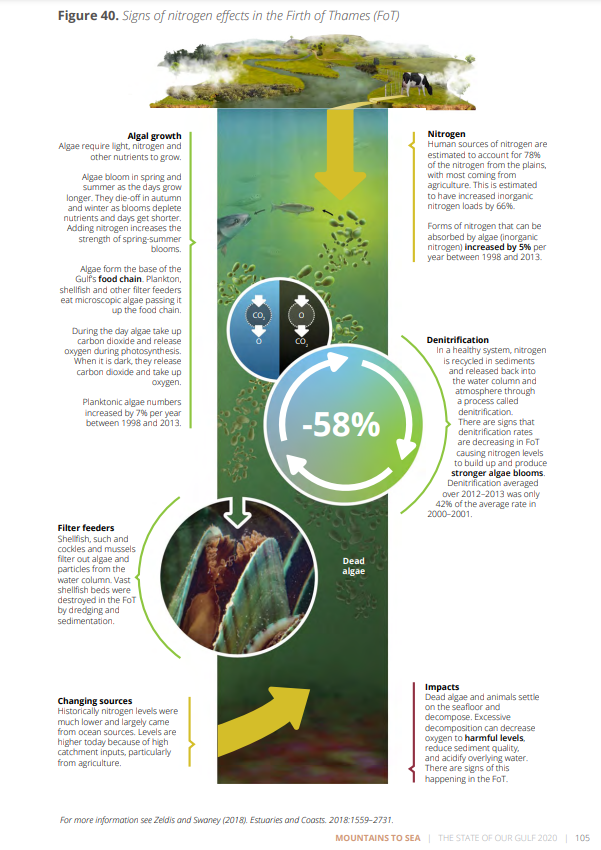
Nutrients sustain the growth of microscopic algae, seaweeds and the other marine plants that form the base of the ocean food chain. In the Hauraki Gulf / Tīkapa Moana / Te Moananui-ā-Toi, nutrients come from the surrounding ocean, are recycled from the seabed, and washed in from the land. We increase nutrient loads to the Marine Park through our wastewater discharges, use of fertilisers, and the effluent produced by our livestock. Fish farming may be a significant source of nutrients in the future.
Slight increases in nutrients can promote healthy plant growth. The extra energy and matter produced flows up the food chain, supporting greater numbers of fish, birds and other sea creatures. But problems occur if nutrient levels get too high. Then, microalgae and nuisance seaweed blooms can occur. Microalgae blooms reduce water clarity and light levels, which can stunt the growth of seaweed and seagrass. When the microalgae or seaweed dies, decomposing bacteria can reduce oxygen levels in the water to harmful levels. On the shore, rotting seaweed can create an unsightly, smelly mess. Nitrogen is generally considered to have the greatest effect on marine water quality, but phosphorus is also a key nutrient of concerns . By far, the largest source of nutrients produced through our activities are the rivers draining the Hauraki Plains. Estimates from 2016 indicate that Waihōu and Piako rivers contribute around 97% of the nutrient load to the southern Firth of Thames, with agricultural sources (particularly dairy farming) estimated to account for 73% of the nitrogen and 41% of the phosphorus loads.